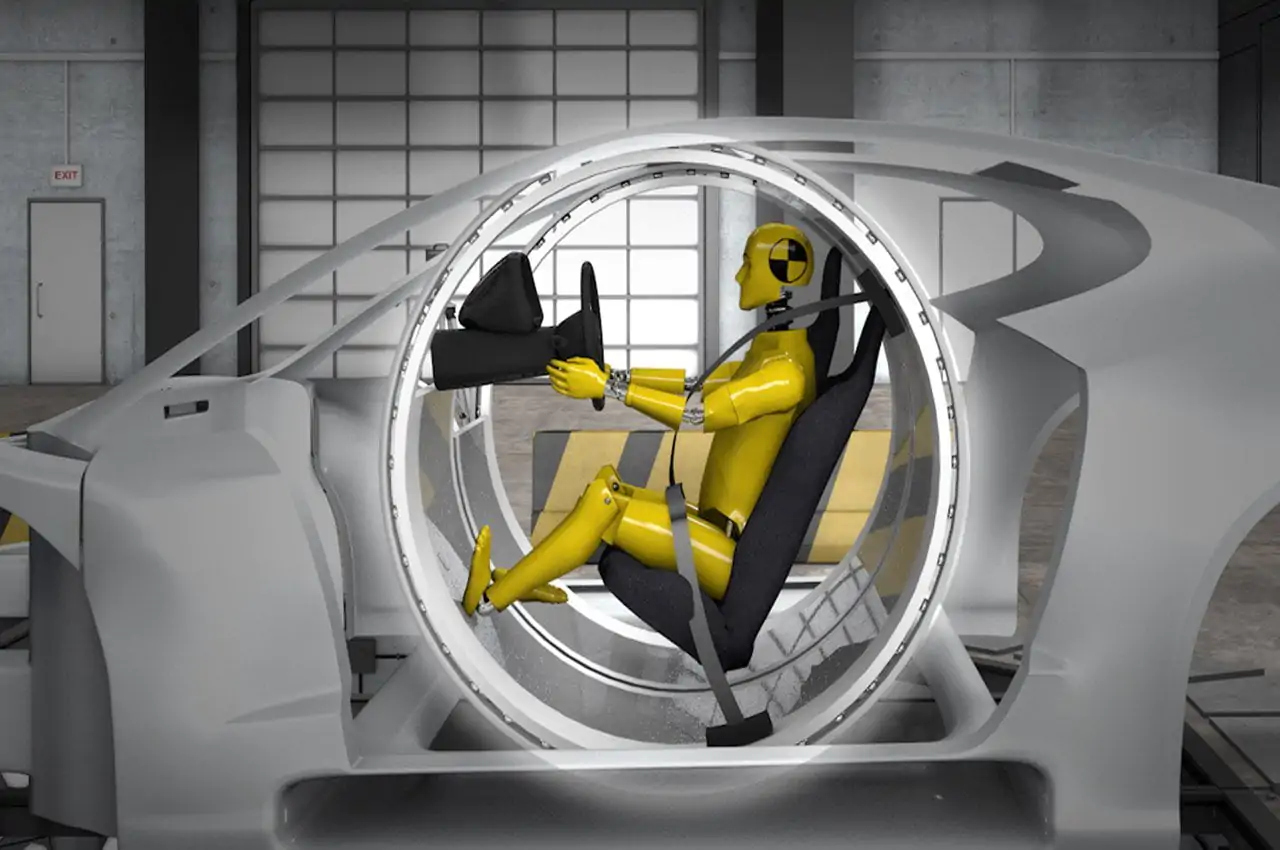A new car safety project could have an impact on how an interior is designed over the next decade. A sustainable solution, almost a Columbus' egg, with the potential to save many lives in the event of a deadly frontal collision.
Traffic accidents are statistically inevitable for a variety of reasons. For this reason, engineers have tried to reduce the severity of collisions and consequently the risk of significant injury or death over the past few decades. In an ideal world, progress in the safety standards they would be enough. A passenger compartment equipped with seat belts and airbags would cushion the impact in the best possible way. If you add other gadgets such as blind spot monitoring, lane assist and automatic braking technologies it seems to be invulnerable.

And instead
Even after these improvements there are still some holes. And they are due to physical restrictions that cannot be circumvented. An example? The "non-deformable" part of a passenger compartment does have a significant impact on the distribution of impact force, but it can only be stretched up to a certain point.
Data suggests that during a head-on collision the human body must experience an acceleration of 20-30G or even more. Such high G forces can permanently damage brain tissue and still cause fatal injuries even in a "protected" cockpit.
The team of designers Arena Designs aims to overcome this problem. And he wants to do it with a cockpit from the innovative design which works on a simple principle: converting potential energy into kinetic energy.
A rotating cockpit.
Dubbed Active Cockpit, this unique design (which reminds me of a hamster wheel) primarily seeks to address the severe impact of a head-on collision by transforming the impact of the crash into a rolling motion of a part of the passenger compartment.
In practice, the driver and passenger in a two-seater vehicle sit in a spherical compartment of the passenger compartment. If and when a collision occurs, the rotating motion of the centrifugal force dissipates the force of the impact, significantly lowering the chance of injury.
Compared to the safety standards of conventional vehicles, this cutting-edge design has the potential to save millions of people – it just remains to be seen whether the (3D printed) prototype will confirm what seems like a good idea in tests.
A little eccentric, I admit, but a good idea.


